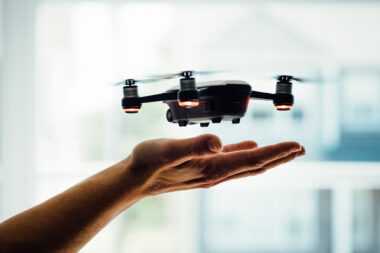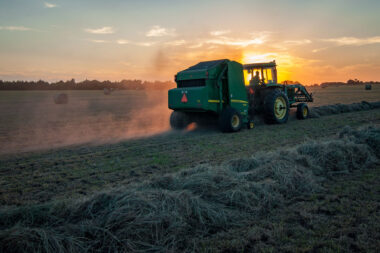Remote robotics extends beyond direct human control and involves autonomous or semi autonomous robotic systems that operate in remote or inaccessible environments. While teleoperation implies real time human control, remote robotics often involves pre programmed or AI driven autonomy for certain tasks.
Key Components of Remote Robotics:
Autonomous Navigation: Remote robotic systems are equipped with sensors and algorithms that enable them to navigate and perform tasks without constant human intervention.
Artificial Intelligence (AI): AI technologies, such as machine learning and computer vision, empower remote robots to adapt to changing environments, make decisions, and learn from their experiences.
Communication Systems: Eemote robotics relies on communication systems for transmitting data between the robot and a control center. This can include instructions, status updates, and sensory information.
Sensor Array: Robust sensor arrays, including cameras, lidar, radar, and other environmental sensors, provide data about the robot’s surroundings, enabling it to perceive and navigate autonomously.
Applications of Remote Robotics:
Autonomous Vehicles: Self driving cars, drones, and unmanned aerial vehicles (UAVs) operate autonomously or semi-autonomously in remote or urban environments.
Unmanned Aerial and Ground Vehicles: Remote robotics is widely used in military and surveillance applications, where unmanned vehicles can operate in challenging or dangerous areas.
Precision Agriculture: Autonomous drones and ground vehicles are employed for tasks such as crop monitoring, planting, and harvesting in agricultural settings.
Environmental Monitoring: Remote robotics is used for monitoring and collecting data in environments that are difficult for humans to access, such as forests, oceans, and polar regions.
Remote robotics requires a combination of software, hardware, and machine learning components to enable autonomous or semi autonomous operation in remote or inaccessible environments. Here’s an overview of the key elements in each category:
Software:
Autonomous Navigation Software:
Algorithms that enable the robotic system to navigate autonomously, avoiding obstacles, and adapting to changing environments. This includes path planning, localization, and mapping software.
Sensor Fusion and Perception Software:
Software that integrates data from various sensors, such as cameras, lidar, radar, and environmental sensors. Machine learning algorithms may be employed for object recognition, terrain analysis, and real-time perception.
Communication Protocols:
Robust communication protocols to facilitate data exchange between the remote robotic system and the control center. This includes reliable transmission of instructions, telemetry data, and real time feedback.
Remote Command and Control Software:
Interfaces for remote operators or a control center to command and monitor the robotic system. This may include graphical user interfaces (GUIs) that provide real time video feeds, status updates, and controls.
Edge Computing:
Implementation of edge computing to process data closer to the robotic system, reducing latency and enabling faster decision making. This is crucial for real time applications.
Security Software:
Security measures, including encryption and authentication protocols, to secure communications and prevent unauthorized access to the robotic system.
Hardware:
Robotic Platform:
The physical robotic platform equipped with actuators, motors, and sensors. This includes the chassis, wheels or legs for mobility, and any manipulators or tools needed for specific tasks.
Sensor Array:
A combination of sensors, including cameras, lidar, radar, GPS, and environmental sensors, to provide the robotic system with a comprehensive understanding of its surroundings.
Communication Hardware:
Communication modules such as transceivers, antennas, and satellite communication equipment to establish reliable connections between the robotic system and the control center.
Onboard Processing Unit:
High performance computing units or microcontrollers for onboard processing. This is essential for executing algorithms related to navigation, perception, and decision making.
Power Systems:
Efficient power systems, which may include batteries, solar panels, or other renewable energy sources, to ensure the robotic system has a sustainable and reliable power supply.
Robotic Arm or Manipulator:
If the robotic system requires manipulation tasks, a robotic arm or manipulator with appropriate actuators and end-effectors is incorporated.
Machine Learning:
Object Recognition and Classification:
Machine learning models for recognizing and classifying objects in the robot’s environment. This is crucial for navigation, obstacle avoidance, and task execution.
Localization and Mapping (SLAM):
Machine learning algorithms, such as Simultaneous Localization and Mapping (SLAM), to enable the robotic system to build and update a map of its surroundings while simultaneously determining its own position.
Predictive Analytics:
Predictive models that anticipate future conditions or obstacles based on historical data, enabling the robot to plan and adapt its actions proactively.
Decision Making Algorithms:
Algorithms that allow the robotic system to make decisions autonomously based on its perception of the environment, mission objectives, and any predefined constraints.
Adaptive Learning:
Systems that can adapt and learn from experience, improving their performance over time. This is particularly important for robots operating in dynamic or changing environments.
In the context of remote robotics, the integration of these software, hardware, and machine learning components enables the robotic system to perform tasks autonomously, respond to environmental changes, and execute mission objectives without constant human intervention. Continuous advancements in these areas contribute to the development of more sophisticated and capable remote robotic systems.
Trends and Manufacturing Techniques
Additive Manufacturing for Robotic Components:
Additive manufacturing, or 3D printing, is increasingly utilized for producing lightweight and complex components for robotic systems. This technique allows for rapid prototyping and the creation of intricate designs that might be challenging with traditional manufacturing methods.
Precision Machining for Sensor Components:
With advancements in sensor technologies, precision machining techniques are employed to manufacture intricate components for sensors. This includes the production of high precision lenses, sensor housings, and other critical parts that contribute to the accuracy of the robotic system’s perception.
Flexible and Soft Robotics Manufacturing:
Flexible and soft robotics are gaining attention for their applications in delicate environments or human robot collaboration. Manufacturing techniques include soft material molding and casting, allowing for the creation of robots with compliant and adaptable structures.
Advanced Materials for Durability:
The use of advanced materials, such as carbon fiber composites and high strength alloys, contributes to the durability and structural integrity of robotic components. These materials provide a balance between strength and weight, crucial for remote robotic systems.
Wireless Charging Technologies:
Remote robotic systems often require efficient power management. Wireless charging technologies are being integrated into manufacturing processes to enable automated and contactless recharging of robotic platforms, extending their operational capabilities.
Integrated Electronics Manufacturing:
Advances in integrated electronics manufacturing contribute to the development of compact and efficient control systems for remote robotics. Miniaturized circuitry, sensors, and communication modules are integrated into small form factors, optimizing space and weight on the robotic platform.
Advanced Robotics Assembly Techniques:
Robotics assembly lines are incorporating advanced automation techniques for building robotic systems. This includes robotic assembly arms, computer vision for quality control, and collaborative robots working alongside human technicians to streamline production.
Machine Learning for Robotic System Calibration:
Machine learning algorithms are applied to calibrate and optimize the performance of robotic systems during manufacturing. These algorithms can adapt to variations in manufacturing processes, improving overall efficiency and consistency.
Multi Material 3D Printing:
Multi material 3D printing allows for the simultaneous use of different materials in a single printing process. This technique enables the creation of robotic components with varied mechanical properties, enhancing the overall functionality and adaptability of the robot.
Environmentally Friendly Manufacturing Practices:
Sustainability is becoming a focus in manufacturing. Remote robotics manufacturers are exploring environmentally friendly practices, such as using recycled materials and optimizing energy consumption during production.
In conclusion, remote robotics embodies a convergence of autonomous navigation, artificial intelligence, and robust communication systems, enabling independent operation in remote environments. Applications range from autonomous vehicles and precision agriculture to military surveillance. The synergy of software, hardware, and machine learning facilitates autonomous task execution and dynamic responses to surroundings. Manufacturing techniques, including additive manufacturing and precision machining, ensure durability, while advanced materials and wireless charging extend operational capabilities. The industry’s commitment to sustainability is reflected in environmentally friendly practices. Remote robotics stands as a symbol of technological progress, heralding a future where intelligent machines autonomously navigate and impact our world.



